than any other country in the world*
Stop ISRAELI WAR CRIMES and GENOCIDE

|
ISRAEL MURDERED MORE CHILDREN
than any other country in the world* Stop ISRAELI WAR CRIMES and GENOCIDE Your Seeds Source...
| ||
| ||
The Secret Valley of Changos
While the most interesting flora grows in the lower parts of the valley (see the other section), the upper part is famous for its mural paintings of Chango Indians. There are hundreds of paintings at an altitude of 1350 and 1700 meters all along the valley. Do not expect to find works of art in the Cromagnon style though, they are very down to earth, or better be said down to sea, very schematic, and primitive, showing mostly big fishes, probably whales harpooned by the fishermen and their boats.
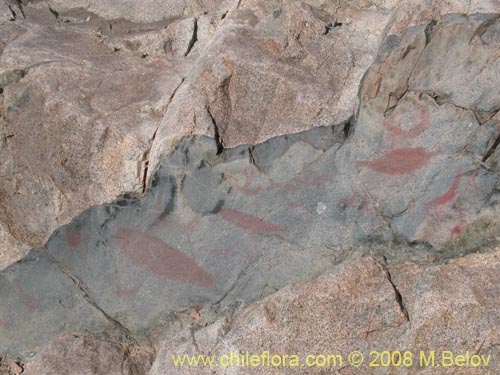
The upper part of the El Medano valley can be reached relatively easy by car. If
you start from Paposo look for a good road climbing on the side of the hill (it makes one zig-zag there) – this is the interior road to Antofagasta. It is unpaved, but very well-kept because it used by mining companies which take the mineral ore down to the Santo Domingo Processing Plant located halfway between Paposo and Taltal. This part of the road is very interesting and worth a special visit. Some 15 km. further the road turns into a paved road and continues climbing slowly to an altitude of over 2000 meters. About 30 km. from Paposo at coordinates 24°50'15.21"S 70°23'35.56"O there is a dirt road going off to the left. If in doubt or you do not have a GPS, look for a mining plant on your right, there is a crossroad with the lateral road going to that plant, at a distance of 4 km. Drive back from that crossroad 2.5 km and watch out for the entrance to the dirt-track road (now on your right, west side).
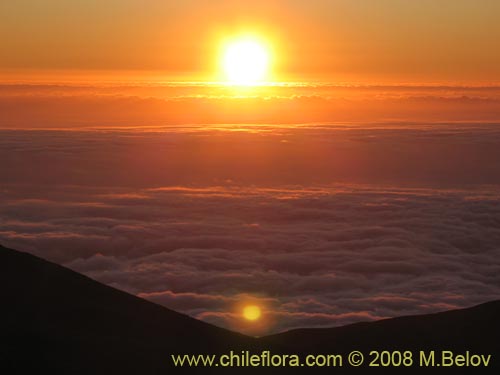
From there you should follow the road for about 8 km; the road gently climbs a shallow valley and then begins to descend on the other side. After some 8 km. you will see another cross road, and there will be a short leg of a another road which will take you to the point 24°48'13.12"S 70°27'44.47"O, about 1 km. from the last cross road. There is small platform and spectacular view down towards the valley; this is El Medano. Here you should leave the car (although if you are very aggressive, you can drive down the slope off-road style, this way you will shave off 200 vertical meters; beware though, that if you do not know what you are doing, you may be stranded down in the valley...)
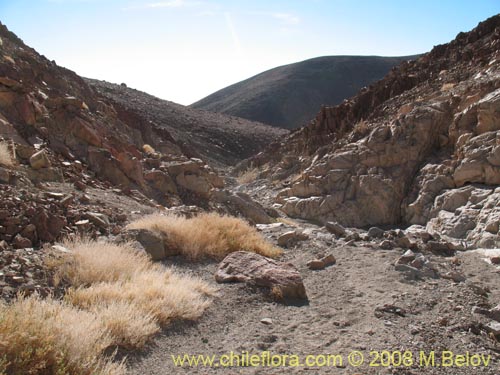
The vegetation is extremely poor; in fact, would it not be for the extreme habitat conditions, I would say that it is not worthwhile to do the trip for plant watching. You will find only six species along the whole climb which takes a couple of hours to do. But the most surprising thing here is the dryness – the place which you can reach easily by car is at an altitude of 1960 meters, at such altitudes the coastal fog does exist and the only hope for the plants is the very rare rain. And on average it rains here about 10 – 15 mm. a year! Three plants manage to survive in these conditions: Cistanthe aranciona, a very strange-looking plant with scorpion tail-like stems, small pink flowers, and an oily surface which prevents the evaporation, a Nolana sp. #1140 which we were not able to identify yet, and a little bit lower (=slightly higher chance of rain), Loasa fruticosa, a big shrub reaching here a height of up to three meters from an altitude of around 1700 meters downwards. That is all!
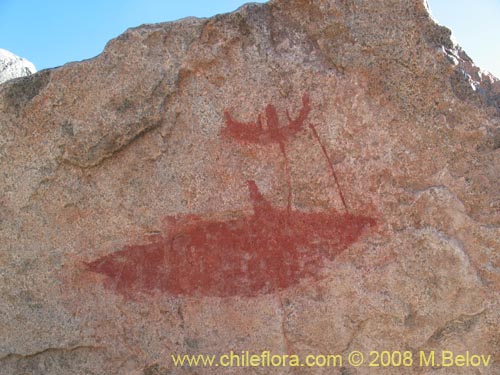
When you descend, you would go down the slope (to the right of the valley bottom), and then you can switch over to the valley floor. From an altitude of 1750 first paintings of Chango Indians will appear on rocks very close to the valley floor (most with 2 – 10 meters) or in the valley floor. Chango Indians lived in these areas for several thousand years, and they traded their sea products with the Incas. The Changos have selected the El Medano valley as a sacred place where they apparently worshipped the sea and asked for good fishing.
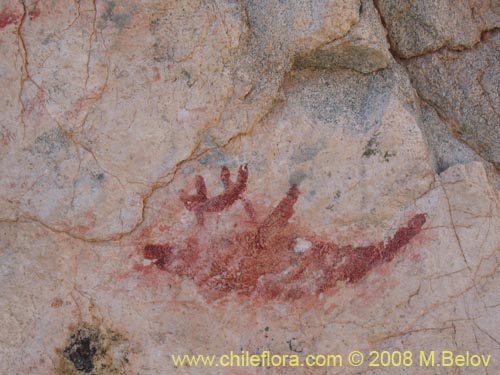
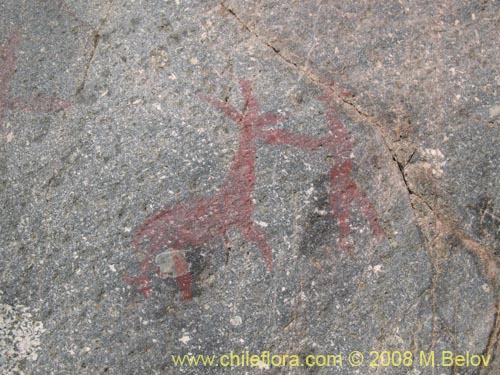
At first I could not understand why the Chango Indians selected such a strange place for worship – it is a complete desert around, almost no plants to be seen, and then I realized: during the approach from where they presumably came (Paposo), the Pacific Ocean is not visible, the first upper part of the valley is steep and does not allow to have a clear sight of the ocean. And then, when the valley becomes less steep at 1750 meters, the first view of the ocean appears, and immediately you can see the first rock paintings.
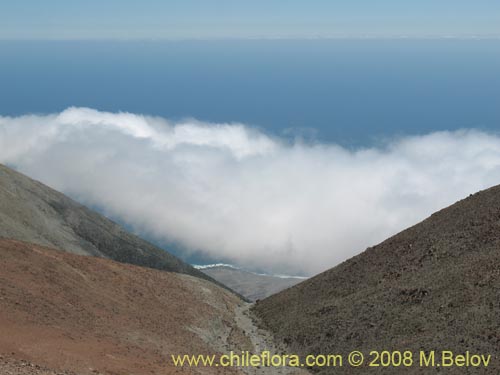
The valley descends to about 1500 meters in the course of 3 km. from where you would have left your car. There, the valley meets another valley, and if you want to, you can follow the valley further down. There you may find a species or two, a Cistanthe, a small Heliotropium shrub, and a large Adesmia species, hardly worth the extra effort. And most of the paintings are located above that fusion of the valleys, although there are two more spots where the same themes of whaling Changos reappear.